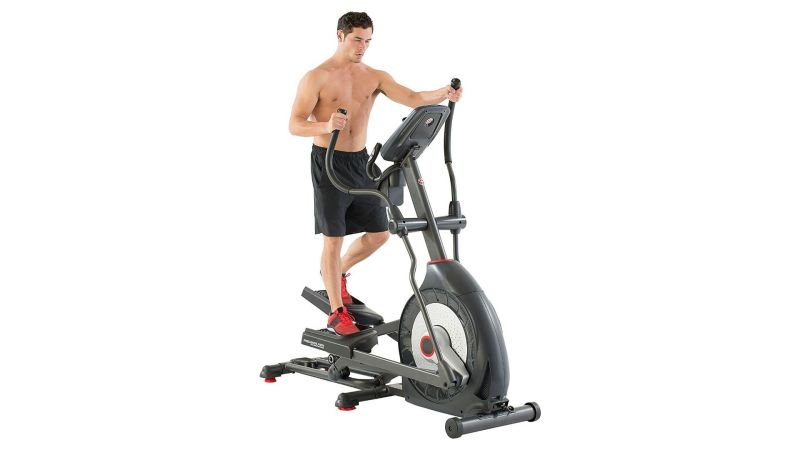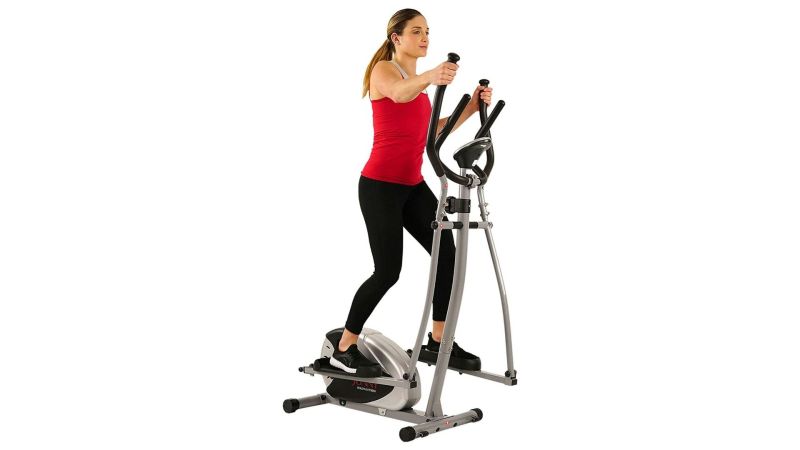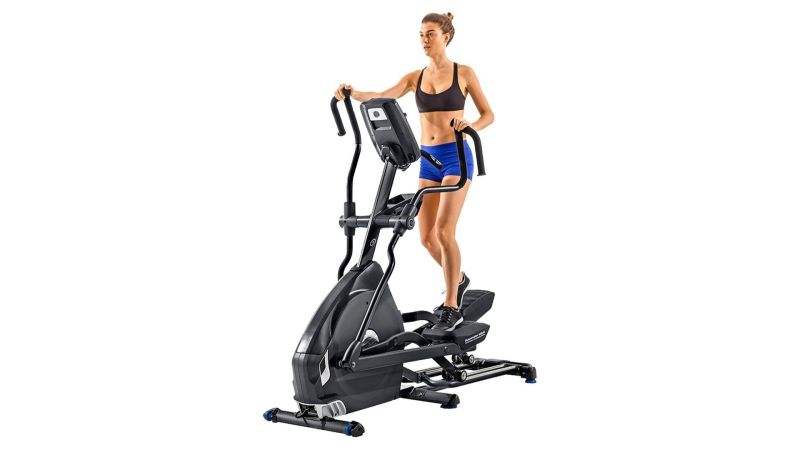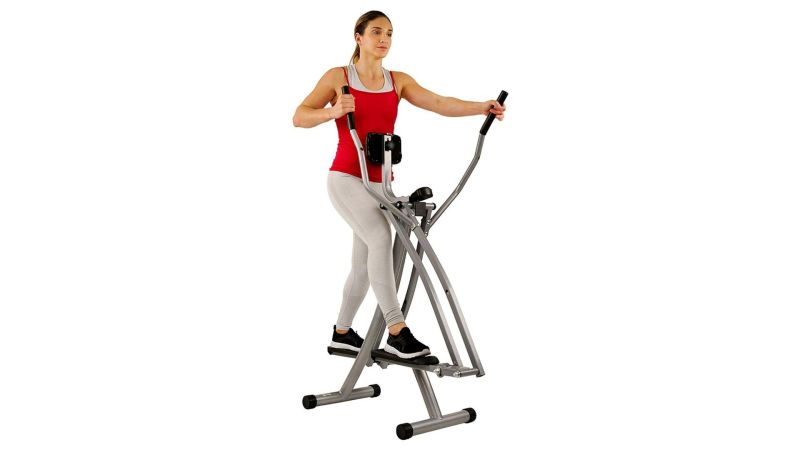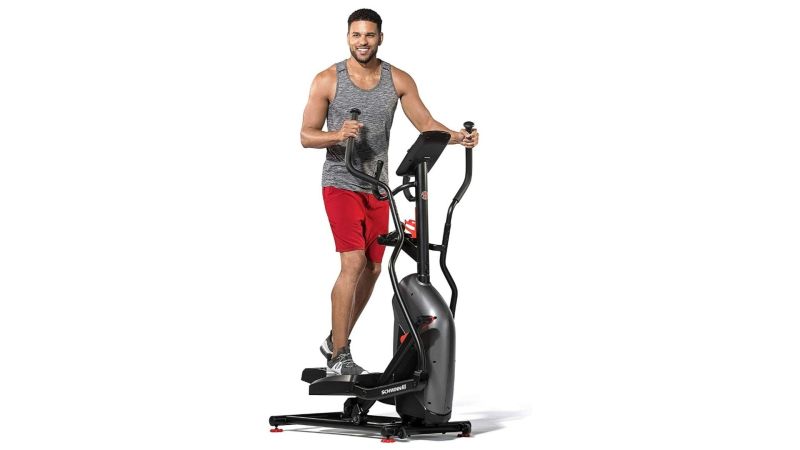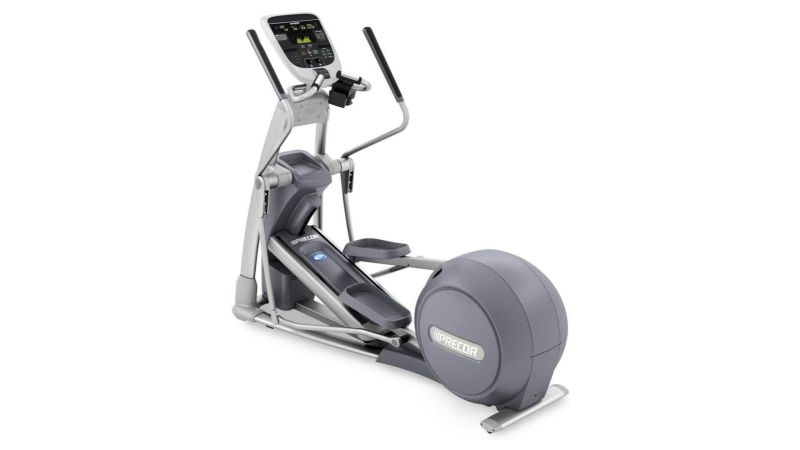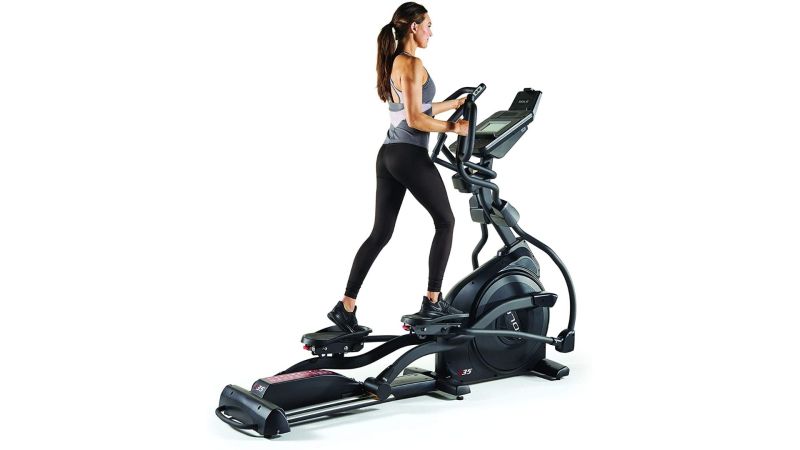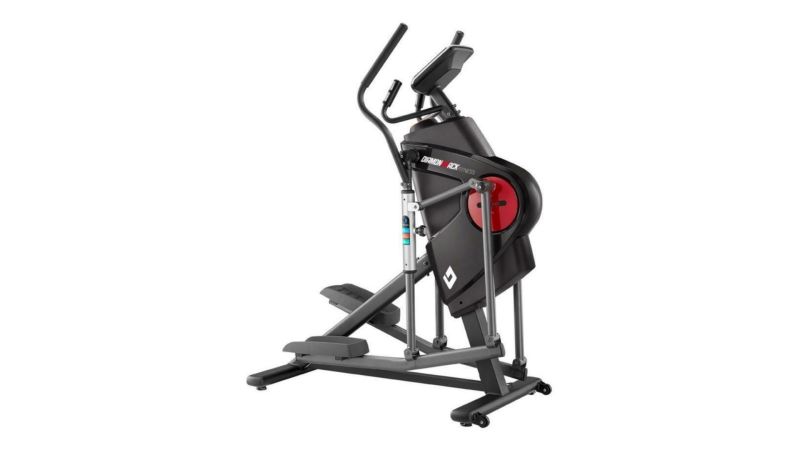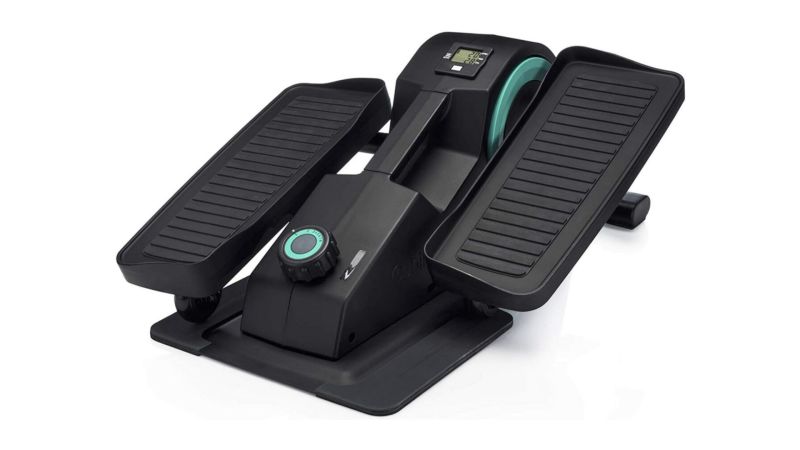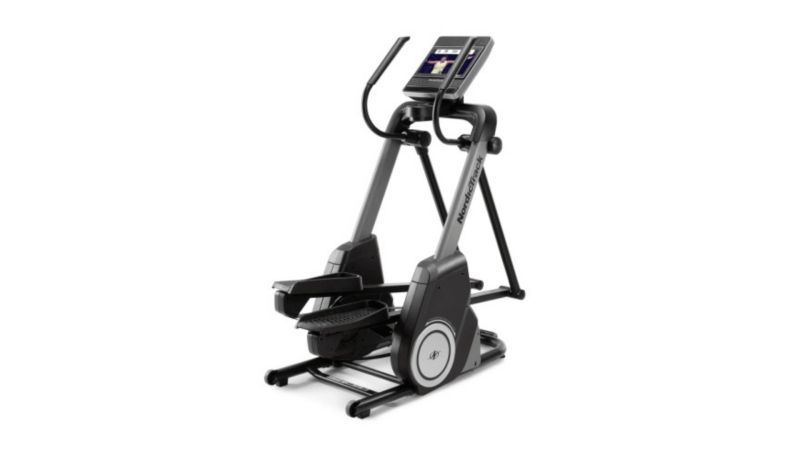We may earn revenue from the products available on this page and participate in affiliate programs.
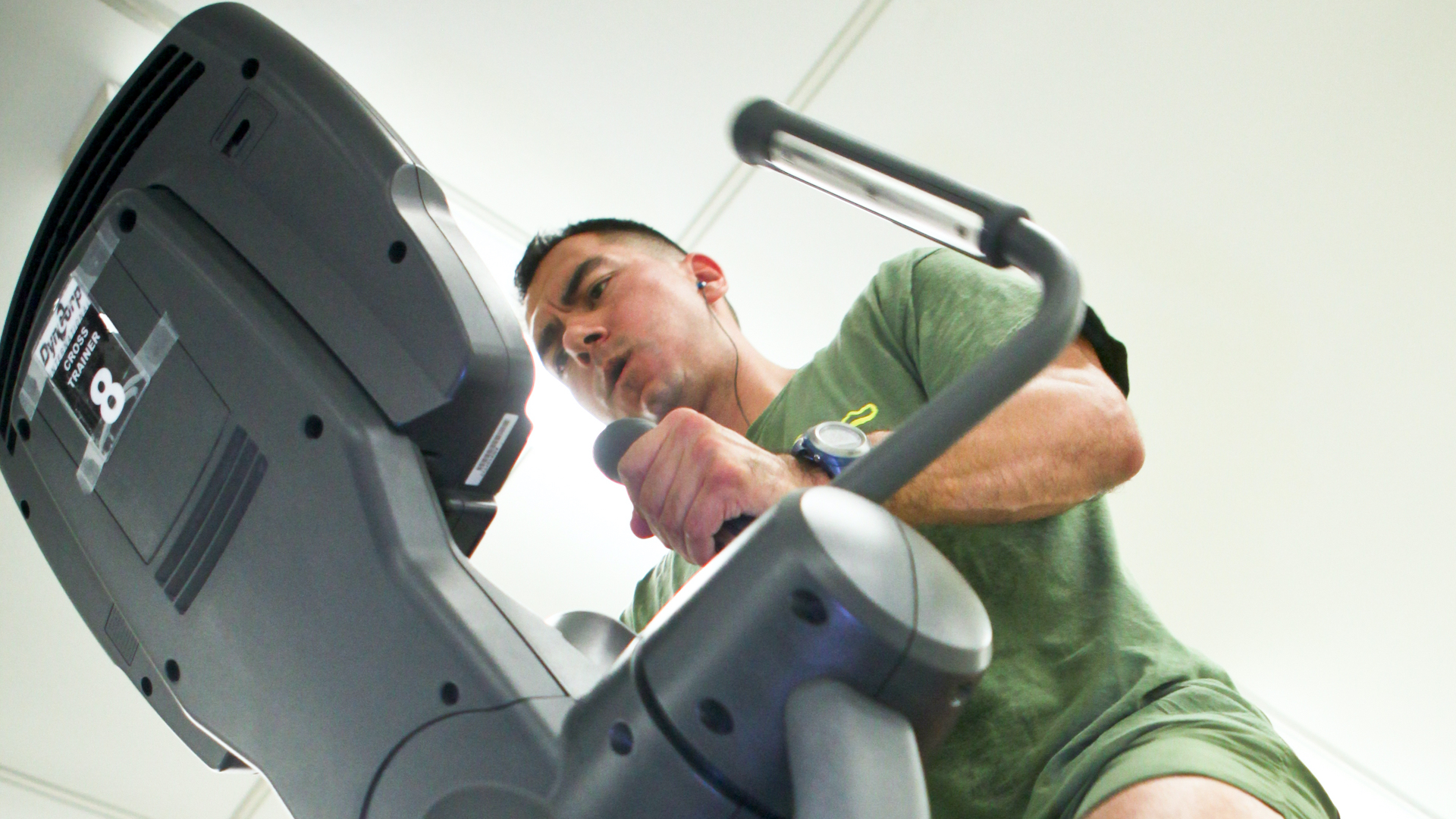
An elliptical machine is one of the best ways to get a cardio workout without putting a lot of strain on your bones and joints. It’s especially helpful if you’re a runner recovering from a lower-body injury that prevents you from road work. Or, if you don’t want to endure the cold in the winter months and have no time for the gym.
With any new workout gear—and especially higher-cost equipment—you want to make sure you make an informed decision. With that in mind, we’ve put together a list of our top picks for ellipticals on the market right now, along with some educational information to help you make the best possible decision. Read on to find the best ellipticals.
Best Overall
Schwinn Fitness 470 Elliptical
Best Value
Sunny Health u0026 Fitness SF-E905 Elliptical
Editor’s Choice
Nautilus E618 Elliptical
Best Budget Runner-up
Sunny Health u0026 Fitness SF-E902 Air Walk Trainer
Best Elliptical For Small Spaces
SCHWINN Fitness 411 Compact Elliptical
Best Elliptical For Knee Pain
Precor EFX 835 Commercial Series Elliptical
Best Elliptical for Comfort
Sole Fitness E35 Elliptical
Best Quiet Elliptical
Diamondback 1060EF Adjustable Stride Elliptical Trainer
Best Under-Desk Elliptical
Cubii JR1 Seated Under Desk Elliptical
Best Splurge
NordicTrack FS14i
Why you should trust us
In June 2008, I had ACL replacement surgery to repair the damage done to my knee during an Army training exercise. As an avid runner, I got the itch to get back on the road fairly quickly, but my physical therapist wouldn’t hear it. As a compromise, I was given the go-ahead to use an elliptical, so I spent the remainder of my summer and fall burning myself out on it.
By the time I was able to get back to running, I had deployed to Afghanistan and it was winter—not the best time or place to start running on a dodgy knee. So I ellipticalled even more, this time facing the bland canvas walls of an Army workout tent. In all, I spent about eight months getting my cardio workouts done on an array of different ellipticals. With that much experience, I feel more than equipped to speak on them.
Types of ellipticals
There are many different types of elliptical machines, but the different types depend on two key factors: the flywheel location and the user’s desired motion. The flywheel can be located at the front, center, or rear of the elliptical and affects the machine’s overall motion, as well as the user’s body position and targeted muscle groups. Within these groups, ellipticals can be broken down further into categories like standard trainers, cross-trainers, gliders, and recumbent.
Front drive
Front-drive ellipticals, as you would expect, position the flywheel at the front of the elliptical. Because of the way the drive belt connects the flywheel to the pedals, the front-drive ellipticals tend to simulate a movement closer to a stair climber machine and keep you lower to the ground than other types. That’s something to consider if your home gym has low ceilings. Front-driver ellipticals are ideal if you’re looking to simulate uphill or climbing workouts. However, you should keep in mind that front-drive ellipticals require more vertical leg movements and therefore can require more out of your knees, which are the problem joints that often send you to an elliptical in the first place.
Rear drive
Rear-drive ellipticals position flywheels at—you guessed it—the rear of the machine. Rear-drive ellipticals are what you’re probably used to seeing in fitness centers. They are the original elliptical design that has been around since the 90’s. The rear-drive machine gives you a longer stride and much less impact on your knees than the front-drive machines. The motion of the rear-drive ellipticals best simulates a normal walking or jogging gait and due to its low impact nature, it seems to be the elliptical of choice if you’re recovering from leg injuries.
Center drive
Center-driver ellipticals are the newest type of elliptical and therefore the least common. The flywheel position is typically off the sides of the machine, sandwiching the pedals in the middle and allowing them to be closer together. It simulates a more realistic running stride. The center-drive elliptical is also thought to be better for your lower back because they don’t require the lean-back of the front-drive machines or the lean-forward of the rear-drive machines. I would bet that this style of elliptical will become more prevalent as time goes on.
Standard trainers
Standard elliptical trainers used to be the most common trainer type. They feature the normal foot pedals, which move in a circular motion but have a stationary bar or handgrips near the display monitor. This means that, with standard elliptical trainers, you are getting almost an entire lower body workout. This also means that there is not a lot of additional movement for your upper body and torso, which makes it one of the lowest impact options available.
Cross-trainers
Cross-trainer ellipticals are similar to standard ellipticals in their pedal placement and leg motion, but cross-trainer ellipticals have moveable arm handles that work in tandem with the motion of the pedals. You can push and pull on the handles as you exercise, to get a workout across your arms, shoulders, and chest, instead of just your lower body. To me, this provides a more natural movement, as most people tend to swing their arms when they run or jog to avoid being mistaken for a robot or pod person.
Gliders
Elliptical gliders tend to look a lot like a standard-trainer elliptical, except that the pedals move back and forth instead of the traditional circular motion of the standard or cross-trainer ellipticals.
Recumbent
A recumbent elliptical allows you to sit while exercising. It looks very similar to a recumbent exercise bike but differs in pedal motion. Recumbent bikes have shorter, faster movements, whereas recumbent ellipticals are longer and slower, reducing the impact on joints. Recumbent ellipticals are a good choice if you’re recovering from injuries, surgeries, or suffering from limited mobility.
Key features of ellipticals
Stride length
The stride length of an elliptical is probably the most important aspect to look at first. Your optimal stride length will be largely dependant on your height and if you don’t choose accordingly, you could end up taking short choppy steps or long, uncomfortable over-strides. The most common stride length in ellipticals is 20 inches, which is generally comfortable for people between heights of 5-foot-4 and 6 feet. If you have people in your home with a big range in height, it may be worth dropping a few extra dollars on a machine with an adjustable stride length.
Resistance levels
It may not be the first thing you think about when looking for an elliptical, but the number of resistance levels your machine offers will affect your satisfaction in the long run. If you are an avid user of your machine, you will likely see gains rather quickly and without the ability to increase resistance, your workouts may plateau and become boring.
More basic models of ellipticals offer few or no levels of resistance, which is fine if you’re not looking to use it all the time or are just using it to maintain a current level of fitness. However, if you are looking to improve your level of fitness, drop some pounds, and reignite your career as a swimsuit model, you’re going to want to step up the difficulty of your workouts every now and again. The more levels of resistance you have, the better workouts you can get.
Display/monitor
Most people like to track their progress when they work out, but there’s a wide degree to which this can be done. For me, there’s a fine line between simply tracking one’s progress and overcomplicating the hell out of it. If you’re someone (like me) who prefers simplicity, you may not mind a machine with a basic display monitor and only a few key tracking data points, such as distance, time, speed, or calories burned. If you like to get into the weeds with numbers and graphs and all that jazz, you may want something a little more swanky that can sync with your other devices, apps, smart appliances, your Alexa, and all the loveable folks at the NSA control center who are cheering you on.
Benefits of ellipticals
Low impact
One of the greatest benefits of an elliptical is that it gives you the great cardio workout of running without all the impact of pounding feet on the pavement. Many people have a hard time with running or jogging, especially later in life, due to the impact it has on ankles, knees, hips, and the lower back. Ellipticals provide a great low-impact alternative and can even be used as a means of rehabilitation from old injuries or recent surgeries. The level of impact can vary by type of elliptical, so if this is a primary reason for purchase, make sure you ensure your final choice fits your body’s needs.
Indoor cardio
Having the means to get a cardio workout indoors can be a lifesaver, especially in the fall and winter, and especially if you live in an area prone to heavy snowfall and low, low temperatures. With a good elliptical, you can avoid the icy roads and potential frostbite on your lungs, while still getting the heart rate up for extended periods.
A quiet workout
Ellipticals tend to be one of the quieter pieces of workout equipment, which is nice if you’re like me and get your daily workout before anyone else in the house is awake. With a treadmill, it’s hard to avoid the tromp, tromp, tromp of your feet slamming down on the belt while you blast away. With an elliptical, you typically get nothing more than a swish, swish, swish and I’ll take a swish over a tromp any day. Keep in mind, the weight of the flywheel in your elliptical can have a large impact on how loud your elliptical is. Typically, a heavier flywheel will make for a smoother, quieter ride.
Pricing Considerations
Budget
In the $0 – $599 price range, you’re looking at more basic models of ellipticals with fewer bells and whistles. Generally, you’ll find front-drive machines with smaller display monitors, but this is a great price range to look at when trying to find something compact for a home gym with limited space. Just be careful and make sure you check the stride length on the machines in this category. Small or “compact” ellipticals can sometimes have a smaller stride length.
Mid-range
The $600 – $1,999 price range is where you’ll start to get a lot more versatility in your elliptical. Generally in this category, the display monitors improve dramatically, and there are a wide range of programmed workouts already loaded into the elliptical. You’ll usually see an increase in the number of resistance levels, as well as the quality of the internal electromagnets which help control resistance and make the ride smoother and quieter. Ellipticals in this category tend to be on the longer side, so most will require a decent amount of space in your home gym.
Premium
When you get above $2000, then you start getting into the big guys. Ellipticals in this category are on par with ones found in fitness centers, resort gyms, and physical therapist’s offices. Most of the machines in this category are rear-drive machines and will be quite large and heavy. That being said, you’ll likely get what you pay for and if you plan to be an avid elliptical rider or you know you’re prone to joint or back injuries, it could be worth dropping the extra coin to get the smoothest ride possible.
How we chose our top picks
Our list of top picks was derived from a ton of research on ellipticals, as well as an abundance of personal experience. I scoured ranking lists, individual product reviews, and Amazon item reviews to find the hot models that are all the rage in the dynamic world of ellipticals. I also drew from my own experiences recovering from knee surgery and reflected on the features I enjoyed and those I didn’t. With all this information and considering the various price points, I’m confident I’ve put together a quality list you can use to build your knowledge before buying your own elliptical.
FAQs on ellipticals
Q. Should I go with a front drive or rear drive elliptical
A: This depends on your workout goals. Front-drive machines tend to offer more of a “stair-stepper” motion and can be useful when training for uphill hikes and climbing. Rear-drive ellipticals tend to have a flatter, horizontal movement that mimics standard walks or runs.
Q. Should I buy an elliptical with a heavier flywheel?
A: If you can, yes. The heavier the flywheel, the smoother and quieter the ride will be, but keep in mind, as the flywheel size increase, the price typically does too. Also, don’t get too hung up on the flywheel. There are some quality machines out there that don’t even use a flywheel.
Q. Why is stride length important?
A: Stride length will determine how comfortable you are on the elliptical. If the stride length is too short, your experience will feel choppy and awkward. If it’s too long, you may struggle and over-extend. Make sure you pick a stride length appropriate for your height.
Q. What is the best type of resistance system?
A: The eddy current resistance system is the most common in higher-end machines. The eddy current resistance system works by moving an electromagnet closer or farther away from the flywheel to change the resistance respectively. Because it is controlled via electric current, there are fewer moving parts and therefore fewer opportunities for performance issues.
Q. What is an elliptical crosstrainer?
A: Elliptical cross trainers are machines that have ergonomically moving arm handles that allow the user to get an upper-body workout also.
Our gear section
Brett Allen is a humor writer and former U.S. Army cavalry officer who served from 2006 to 2010, largely with the 3rd Squadron, 71st Cavalry Regiment of the 10th Mountain Division. The events of his 2009 deployment to the Logar Province of Afghanistan became the inspiration for his recently published debut novel, Kilroy Was Here, which is a dark comedy highlighting the absurdities of war. Brett resides in Ada, Michigan with his wife and kids and is currently working on his next novel. He enjoys all things outdoors to include backwoods camping, backwoods cooking, hiking, and boating, but can more regularly be found mowing, weed whacking, or performing some other form of backbreaking yardwork.
